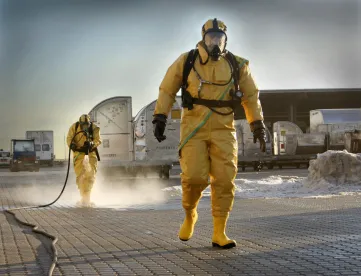Chemical manufacturers and importers may now begin preparation of their 2020 TSCA Chemical Data Reporting (CDR) submissions in earnest. In two separate pre-publication Federal Register notices, EPA has finalized its 2020 CDR regulations and extended by two months the deadline to report. The submission period will now run from June 1, 2020 through November 30, 2020. Additionally, EPA announced that it will host a webinar on March 31, 2020 at 1:00pm Eastern to provide an overview of the 2020 CDR regulations and walk through EPA's draft e-CDRweb reporting tool.
CDR Deadline Extended Through November 30, 2020
EPA's proposed CDR amendments rule had envisioned a reporting period of June 1, 2020 to September 30, 2020. 84 Fed. Reg. 17692, Apr. 25, 2019. The prepublication final rule keeps that reporting period. 40 C.F.R. § 711.20. However, in a separate prepublication notice, EPA stated that extending the deadline by two months was appropriate for several reasons, including the delayed finalization of the 2020 CDR regulations. EPA also stated that it wished to give the regulated community additional time to become familiar with the updated web reporting tool.
2020 CDR Rule Changes
The changes to the 2020 CDR regulations, relative to the 2016 version include:
-
Changing requirements for confidentiality claims. In order to align with the 2016 TSCA amendments, the CDR rules will now require up-front substantiation of confidentiality claims. 40 C.F.R. § 711.30(a)(3). The rule also now lists certain data elements that cannot be claimed as confidential (e.g., certain elements for how a chemical is processed and used). 40 C.F.R. § 711.30(a)(2).
-
Mandating the use of OECD functional use and product and article use codes. Certain processing and use codes used in prior CDR reporting will now be replaced by corresponding OECD codes. 40 C.F.R. § 711.15(b)(4)(i)(C). EPA made this change in part to harmonize with non-U.S. reporting requirements.
-
Requiring reporting of North American Industry Classification System (NAICS) codes for sites of manufacture. Manufacturers must now provide industry-specific NAICS codes for each site for which they report a chemical. 40 C.F.R. § 711.15(b)(2)(iv). EPA stated that this will enable the agency to perform industry-specific analyses and increase the ability to combine CDR data with other sources (e.g., Toxics Release Inventory).
-
Modifying the requirement to report removal from the waste stream. In prior CDR periods, companies were required to indicate whether a chemical was removed from the waste stream and recycled, remanufactured, reprocessed, or reused. For the 2020 CDR period, EPA is requiring companies to indicate whether a chemical is removed from the waste stream and recycled. 40 C.F.R. § 711.15(b)(3)(vi). EPA indicated that the terms “remanufactured, reprocessed, reused,” could be interpreted and applied too broadly to obtain information of interest.
-
Allowing companies to voluntarily indicate whether a chemical is a byproduct. EPA's original proposal for the 2020 CDR rules would have made such indication mandatory, but in response to comments, EPA decided to make it voluntary.
-
Requiring secondary submitters of joint submissions to report chemical function and percentage in imported products. Due to business confidentiality, importers of mixtures sometimes are not aware of the specific chemical identity or concentration of the mixtures they import. In such cases, importers may designate a secondary submitter to provide the necessary information to EPA on a confidential basis. 40 C.F.R. § 711.15(a)(1)(A). Beginning in the 2020 CDR reporting cycle, secondary submitters will be required to substantiate confidentiality claims for information on the function of the chemical as well as its concentration within the mixture. 40 C.F.R. § 711.30(a)(3).
-
Modifying the identification of parent companies. For the 2020 CDR reporting cycle, EPA is establishing a convention for submitters to identify parent companies. The CDR rules will add the requirement to report a foreign parent company and add a new definition for “highest-level parent company." 40 C.F.R. § 711.3.
-
Provide two reporting options for co-manufacturers.
-
Under the first option, the contracting company (primary submitter) would initiate a co-manufacturer report using EPA's e-CDRweb reporting tool that would prompt the reporting requirements for the producing company (secondary submitter).
-
Under the second option, the contracting and producing company would work together to complete the reporting. The producing company (instead of the contracting company) would initiate and complete the reporting in e-CDRweb, coordinating with the contracting company to obtain all information needed to complete the submission.
-
-
Adding certain reporting exemptions relating to byproducts. The 2020 CDR rule incorporates exemptions: (1) for specifically identified byproducts that are recycled in a site-limited, enclosed system; and (2) for byproducts that are manufactured as part of non-integral pollution control and boiler equipment. 40 C.F..R. § 711.10(d)
EPA also announced that prior to the commencement of the reporting period, it will be issuing detailed Instructions for Reporting, in line with EPA's practice for prior CDR reporting periods. The Instructions from January 2018 are available here.





 />i
/>i

